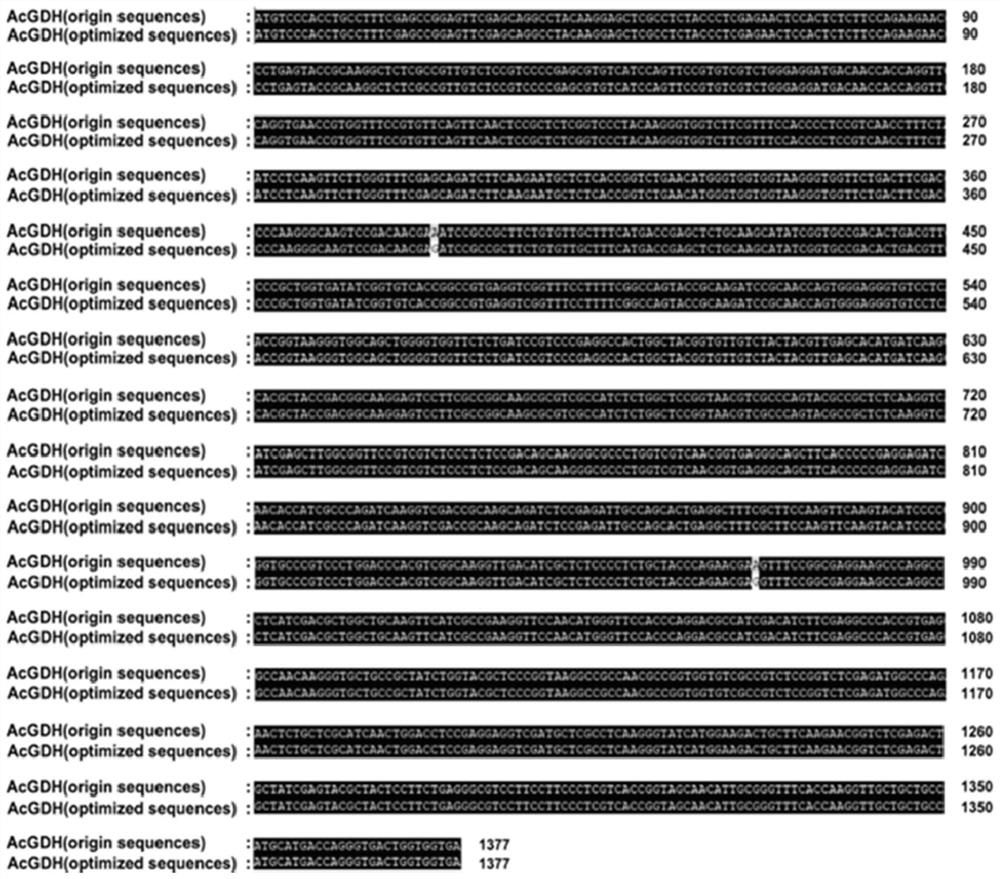Aspergillus candidus AcGDH protein for improving drought and alkali stress tolerance of rice, gene and application of Aspergillus candidus AcGDH protein
A drought stress and tolerance technology, applied in applications, genetic engineering, plant genetic improvement, etc., can solve problems such as infeasibility and reproductive isolation barriers, and achieve the effects of reducing yield loss, promoting absorption and assimilation, and reducing ammonia toxicity
- Summary
- Abstract
- Description
- Claims
- Application Information
AI Technical Summary
Problems solved by technology
Method used
Image
Examples
Embodiment Construction
[0055] The experimental methods mentioned in the following examples are conventional methods unless otherwise specified.
[0056] 1. Cloning of AcGDH gene
[0057] The conserved region of the GDH gene was found through the sequence of the sequenced fungal GDH gene, and degenerate primers were designed using primer5. The forward primer of the degenerate primer starts from the start codon of the open reading frame, and the sequence is 5'-ATGTCCCACCTGCCTTTCGARCCNGARTT-3'; the reverse primer of the degenerate primer is located behind the 3' end of the open reading frame, and the sequence is 5'-CCCCACCAGTCACCCCTGGTCRTGCATNGC -3'. Then the AcGDH gene was cloned by RT-PCR using the cDNA of the fungus Aspergillus candidus as a template. According to the method of Chen et al. (2006), the AcGDH gene was cloned into the GATEWAY entry vector pGWC and then sequenced (Chen QJ, Zhou HM, Chen J, WangXC.Using a modified TA cloning method to create entry clones[J].Anal Biochem,2006 , 358:120...
PUM
 Login to View More
Login to View More Abstract
Description
Claims
Application Information
 Login to View More
Login to View More - R&D
- Intellectual Property
- Life Sciences
- Materials
- Tech Scout
- Unparalleled Data Quality
- Higher Quality Content
- 60% Fewer Hallucinations
Browse by: Latest US Patents, China's latest patents, Technical Efficacy Thesaurus, Application Domain, Technology Topic, Popular Technical Reports.
© 2025 PatSnap. All rights reserved.Legal|Privacy policy|Modern Slavery Act Transparency Statement|Sitemap|About US| Contact US: help@patsnap.com



